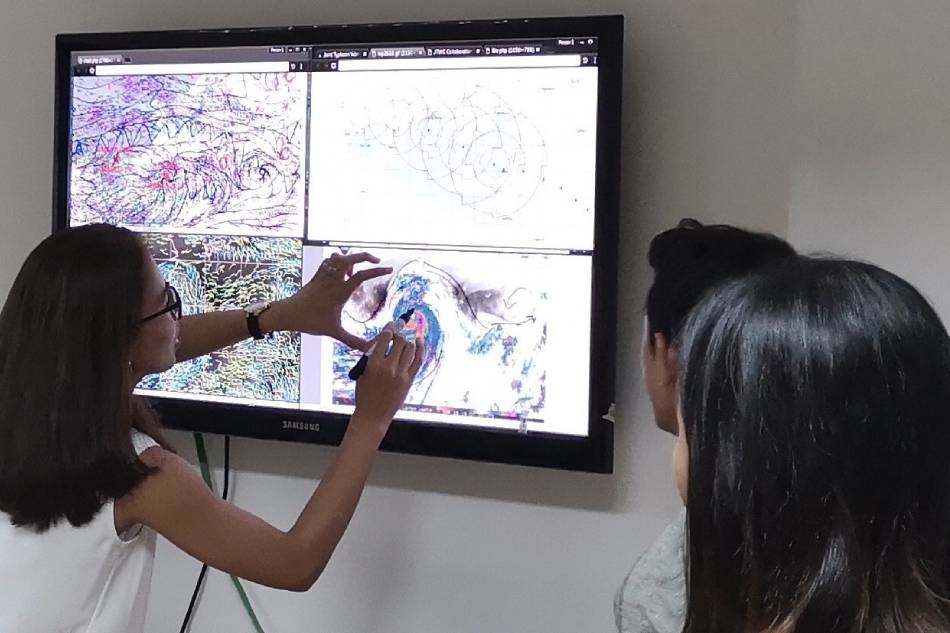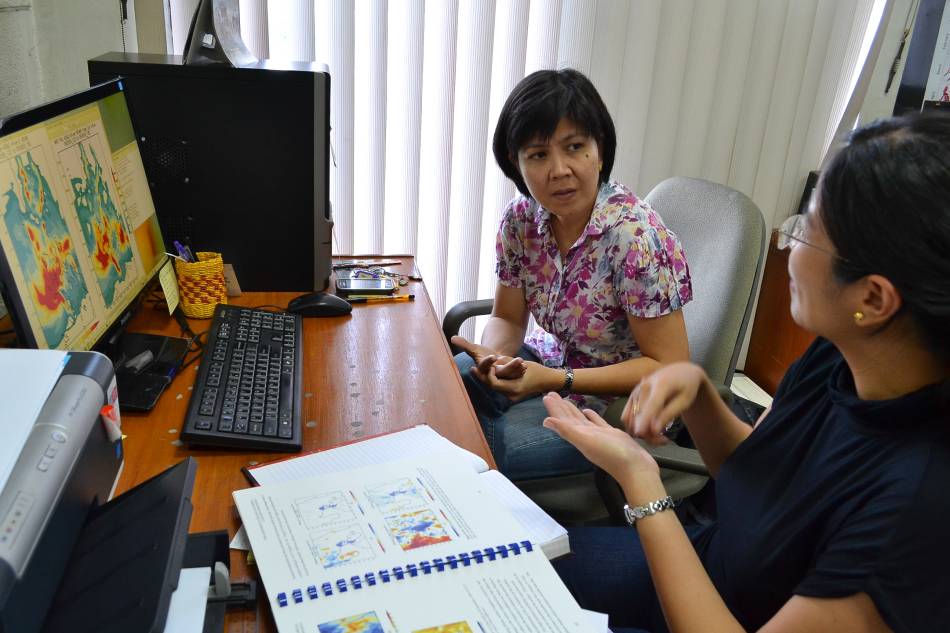Manila Observatory to acquire super computer to boost weather forecast systems | ABS-CBN
ADVERTISEMENT

Welcome, Kapamilya! We use cookies to improve your browsing experience. Continuing to use this site means you agree to our use of cookies. Tell me more!
Manila Observatory to acquire super computer to boost weather forecast systems
Manila Observatory to acquire super computer to boost weather forecast systems
ABS-CBN News
Published Jul 07, 2022 11:54 AM PHT
MANILA — Anti-poverty organization Oxfam Pilipinas has said that it is supporting Manila Observatory, the oldest scientific research institution in the Philippines, in obtaining a high-performance computer for its weather forecasting system.
MANILA — Anti-poverty organization Oxfam Pilipinas has said that it is supporting Manila Observatory, the oldest scientific research institution in the Philippines, in obtaining a high-performance computer for its weather forecasting system.
The Manila Observatory plans to use a 96-core computer to run an ensemble of weather prediction models, Oxfam said. These models will then be analyzed by their researchers and shared with the public via the website panahon.observatory.ph/ecw.
The Manila Observatory plans to use a 96-core computer to run an ensemble of weather prediction models, Oxfam said. These models will then be analyzed by their researchers and shared with the public via the website panahon.observatory.ph/ecw.
The 96-core computers are “the building block of the HPC5 supercomputer, which is currently the 9th most powerful system in the world,” according to the Manila Observatory. The said computer is owned by a company in Italy called Eni that processes geophysical and seismic data to map the crust of the region they are studying.
The 96-core computers are “the building block of the HPC5 supercomputer, which is currently the 9th most powerful system in the world,” according to the Manila Observatory. The said computer is owned by a company in Italy called Eni that processes geophysical and seismic data to map the crust of the region they are studying.
The machine will also be used to run climate models to come up with climate forecast maps. These will help people identify areas that are most at risk due to the changing climate.
The machine will also be used to run climate models to come up with climate forecast maps. These will help people identify areas that are most at risk due to the changing climate.
ADVERTISEMENT
With the effects of climate change already being experienced by climate-vulnerable countries like the Philippines, there is an increasing need to improve early warning systems, said Manila Observatory executive director and former Ateneo de Manila University president Father Jett Villarin.
With the effects of climate change already being experienced by climate-vulnerable countries like the Philippines, there is an increasing need to improve early warning systems, said Manila Observatory executive director and former Ateneo de Manila University president Father Jett Villarin.
"In a warmer world, we are poised to face a lot of uncertainty, including more extreme events,” Villarin said.
"In a warmer world, we are poised to face a lot of uncertainty, including more extreme events,” Villarin said.
“We’ve had a preview already,” he added, mentioning the increase in the incidence of category 5 storms, such as Super Typhoon Rai (Odette) last December, making landfall.
“We’ve had a preview already,” he added, mentioning the increase in the incidence of category 5 storms, such as Super Typhoon Rai (Odette) last December, making landfall.
Oxfam Pilipinas Country Director Lot Felizco said the humanitarian and development organization was eager to help Manila Observatory since it sees climate change as one of the biggest multipliers of poverty around the world.
Oxfam Pilipinas Country Director Lot Felizco said the humanitarian and development organization was eager to help Manila Observatory since it sees climate change as one of the biggest multipliers of poverty around the world.
Villarin said he is excited by the prospect of Manila Observatory working with Oxfam on such projects.
Villarin said he is excited by the prospect of Manila Observatory working with Oxfam on such projects.
ADVERTISEMENT
He said it is really important and urgent to have science as a good foundation for development work.
He said it is really important and urgent to have science as a good foundation for development work.
“It’s very fulfilling to know that something in the lab is translating to lives saved out there,” he said.
“It’s very fulfilling to know that something in the lab is translating to lives saved out there,” he said.
Villarin said they will be using the machine to explore changes and uncertainties in the seasons, inter-annual weather patterns, and long-term decadal climate in this century.
Villarin said they will be using the machine to explore changes and uncertainties in the seasons, inter-annual weather patterns, and long-term decadal climate in this century.
“You’d like to know all this for agriculture and fisheries, for example. How will changes in habagat, amihan, La Niña or El Niño adversely affect us on the ground?” he explained.
“You’d like to know all this for agriculture and fisheries, for example. How will changes in habagat, amihan, La Niña or El Niño adversely affect us on the ground?” he explained.
Villarin said the plan is not to compete with the state weather bureau, the Philippine Atmospheric, Geophysical and Astronomical Services Administration (PAGASA), but to work alongside them.
Villarin said the plan is not to compete with the state weather bureau, the Philippine Atmospheric, Geophysical and Astronomical Services Administration (PAGASA), but to work alongside them.
ADVERTISEMENT
“Theirs is the official voice. Ours is another set of eyes looking at the same thing. For example, if you have a typhoon coming, there are already many pictures coming from PAGASA, Japan, US, and Europe, etc,” he said.
“Theirs is the official voice. Ours is another set of eyes looking at the same thing. For example, if you have a typhoon coming, there are already many pictures coming from PAGASA, Japan, US, and Europe, etc,” he said.
Most of the time, the forecasts converge but “there are instances when these forecasts diverge and there will be other points of view.”
Most of the time, the forecasts converge but “there are instances when these forecasts diverge and there will be other points of view.”
“We can provide another point of view based on our calculations and ground-based stations,” Villarin said.
“We can provide another point of view based on our calculations and ground-based stations,” Villarin said.
For now, Manila Observatory is working on acquiring more machines to strengthen its climate computing facility.
For now, Manila Observatory is working on acquiring more machines to strengthen its climate computing facility.
Villarin said he hopes to have more multidisciplinary partnerships since science alone will not solve the climate emergency.
Villarin said he hopes to have more multidisciplinary partnerships since science alone will not solve the climate emergency.
RELATED VIDEO
Read More:
Oxfam Pilipinas
Manila Observatory
Jett Villarin
climate change
global warming
climate crisis
Oxfam
PC5 supercomputer
PAGASA
super computer
ADVERTISEMENT
ADVERTISEMENT




